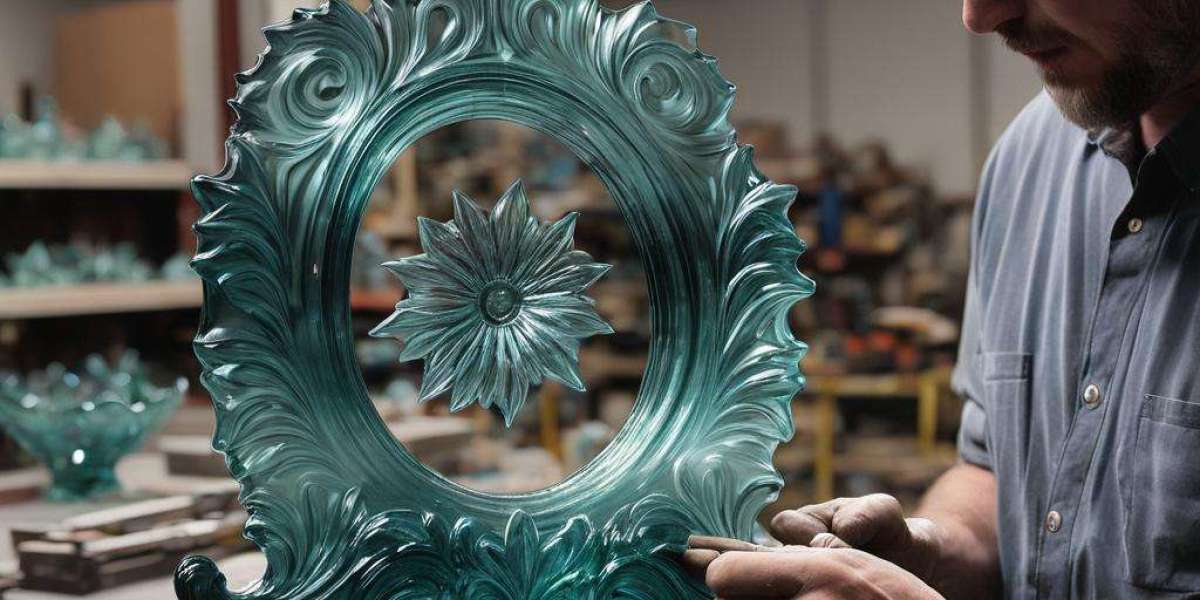The Art of Glass Molding
The art of glass molding is a captivating process that involves transforming molten glass into beautiful and intricate shapes. It requires skill, precision, and a deep understanding of the properties of glass.
Glass molding has been practiced for centuries, with artisans using various techniques and tools to create stunning glassware, sculptures, and decorative objects. Whether it's blowing, casting, or pressing, each method offers its own unique possibilities and challenges.
One of the key aspects of the art of glass molding is the ability to manipulate the glass while it's still in its molten state. This requires a steady hand and an eye for detail, as the glass can be shaped and formed in countless ways. From delicate curves to intricate patterns, the possibilities are endless.
Through the art of glass molding, artists can breathe life into their creative visions, turning simple materials into works of art that captivate and inspire.
The Tools and Techniques
Glass molding involves the use of specialized tools and techniques that are essential for shaping and manipulating the glass. These tools can range from simple handheld tools to complex machinery, depending on the specific method of glass molding being used.
Some common tools used in glass molding include blowpipes, jacks, shears, and molds. Blowpipes are used in the traditional technique of glass blowing, allowing the artist to blow air into the molten glass to create shapes and forms.
Jacks and shears are used to manipulate and shape the glass while it's still hot and malleable. They allow the artist to create precise cuts, bends, and curves in the glass, giving it the desired form.
Molds are another important tool in glass molding. They can be made from various materials such as wood, metal, or plaster and are used to shape the glass by providing a template or pattern. The molten glass is poured or pressed into the mold, taking on its shape as it cools and solidifies.
Mastering the tools and techniques of glass molding requires years of practice and experience. It's a delicate balance of skill, intuition, and creativity, as the artist must navigate the unique properties of glass to bring their vision to life.
From Design to Reality
The process of bringing a glass design from concept to reality is a journey that requires careful planning and execution. It starts with a design idea, which can be sketched on paper or created using computer-aided design (CAD) software.
Once the design is finalized, the next step is to gather the necessary materials and tools for the glass molding process. This includes selecting the type of glass, determining the appropriate colors and additives, and preparing the workspace.
With everything in place, the artist can begin the actual glass molding process. This involves heating the glass to its melting point, shaping it using the chosen technique and tools, and allowing it to cool and solidify into its final form.
During the glass molding process, the artist must constantly monitor the temperature and viscosity of the glass to ensure it's in the optimal state for shaping. They may need to make adjustments or corrections along the way to achieve the desired result.
Once the glass has cooled and solidified, the finishing touches can be added. This may include polishing, engraving, or applying decorative elements to enhance the beauty and uniqueness of the piece.
From start to finish, the journey from design to reality in glass molding is a testament to the artist's creativity, skill, and dedication.
The Role of Creativity
Creativity is at the heart of glass molding. It's what allows artists to transform raw materials into stunning works of art that evoke emotions and captivate viewers.
In the world of glass molding, creativity knows no bounds. Artists can experiment with different colors, shapes, and textures to create pieces that are truly unique and one-of-a-kind. They can push the boundaries of what is traditionally considered possible with glass, challenging conventions and inspiring new ideas.
Creativity also plays a crucial role in problem-solving during the glass molding process. Artists must constantly adapt and find innovative solutions to overcome challenges and achieve their desired vision.
The art of glass molding is a testament to the power of creativity to shape dreams and bring imagination to life.
Exploring Different Glass Molding Styles
Glass molding offers a wide range of styles and techniques for artists to explore. Each style has its own unique characteristics and aesthetic appeal, allowing artists to express their creativity in different ways.
One popular glass molding style is blown glass, which involves shaping the glass by blowing air into it using a blowpipe. This technique allows for the creation of delicate and intricate forms, with the final result often showcasing the artist's breath-taking skill and precision.
Another style is cast glass, which involves pouring molten glass into a mold and allowing it to cool and solidify. This technique offers the opportunity to create more complex and detailed designs, as the glass can take on the intricate details of the mold.
Pressed glass is yet another style of glass molding, where molten glass is pressed into a mold using a plunger or other pressing tool. This technique is often used to create glassware and decorative objects with consistent shapes and patterns.
By exploring different glass molding styles, artists can discover new possibilities and expand their creative horizons. Each style offers its own unique challenges and rewards, allowing artists to continuously evolve and refine their craft. Shop Now Glass Candle Molds.












